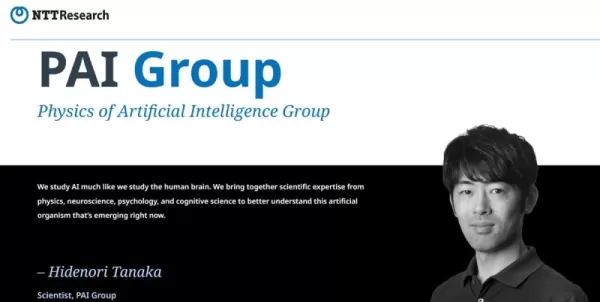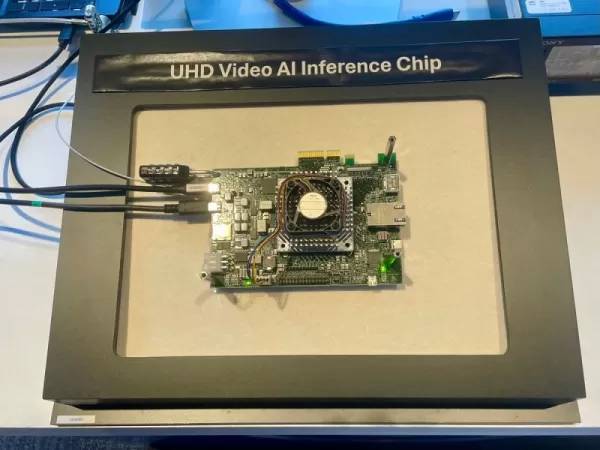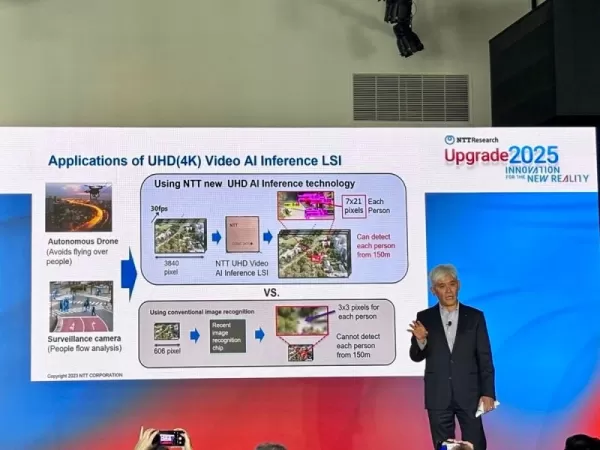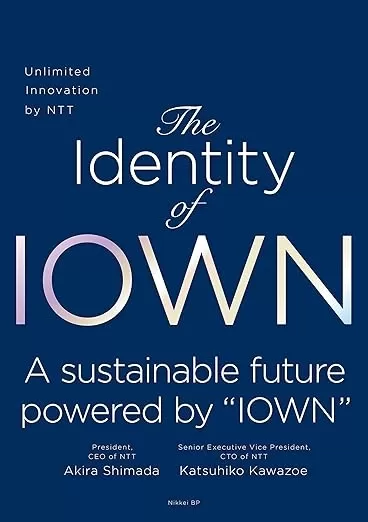NTT Unveils Physics of AI Group and AI Chip Design for 4K Video Inference
At NTT Research's annual Upgrade event, a new AI basic research group was unveiled, named the Physics of Artificial Intelligence Group (PAI Group). This move comes at a time when physical AI is making waves, particularly with companies like Nvidia pushing the boundaries by using synthetic data to speed up the development and market entry of self-driving cars and humanoid robots. NTT Research is eager to jump on this bandwagon with its newly formed PAI Group.
Spun off from its Physics of Intelligence (PHI) Lab, the PAI Group aims to delve deeper into the "black box" of AI, enhancing our understanding and thereby improving trust and safety. NTT Research, a division of Japan's major telecommunications giant NTT, boasts an impressive annual R&D budget of $3.6 billion.
Last year, NTT introduced its "Physics of Intelligence" vision, initially developed in partnership with the Harvard University Center for Brain Science. This vision has seen significant contributions over the past five years and continues to thrive through collaborations with academic partners.

PAI Group banner
The PAI Group is set to be led by Hidenori Tanaka, an NTT Research Scientist renowned for his expertise in physics, neuroscience, and machine learning. His leadership will guide the group in its pursuit of enhancing human/AI collaboration.
Building on the interdisciplinary approach pioneered by the PHI Lab over the last five years, the new group will focus on unraveling the mysteries of AI's "black box" nature. This is crucial for developing more energy-efficient AI systems. With AI's rapid advancement, ensuring trustworthiness and safety has become paramount for its application across various industries and for the governance of AI adoption.
In partnership with leading academic researchers, the PAI Group seeks to explore the parallels between biological and artificial intelligence. Their goal is to demystify AI's complex mechanisms, fostering trust and paving the way for a more seamless integration of human and AI collaboration. By better understanding how AI is trained, accumulates knowledge, and makes decisions, the group aims to design future AI systems that are cohesive, safe, and trustworthy.
This approach mirrors the historical role of physics, where understanding the forces that move objects led to the development of machines we rely on today. For instance, the steam engine's development helped us grasp thermodynamics, which in turn facilitated the creation of advanced semiconductors. Similarly, the PAI Group's work is poised to shape the future of AI technology.
The PAI Group will continue its collaboration with the Harvard University Center for Brain Science, led by Professor Venkatesh Murthy, and with Princeton University's Assistant Professor Gautam Reddy, a former NTT Research Scientist. The group also plans to work with Stanford University's Associate Professor Surya Ganguli, with whom Tanaka has co-authored several papers. The core team includes Tanaka, NTT Research Scientist Maya Okawa, and NTT Research Post-doctoral Fellow Ekdeep Singh Lubana.
Notable past contributions from the team include a highly cited neural network pruning algorithm, a bias-removal algorithm for large language models recognized by the U.S. National Institute of Standards and Technology (NIST), and new insights into AI's conceptual learning dynamics.
The PAI Group's mission is threefold: 1) To deepen our understanding of AI mechanisms, integrating ethics inherently rather than through post-hoc adjustments; 2) To create controlled AI environments inspired by experimental physics to observe learning and prediction behaviors systematically; and 3) To bridge the trust gap between AI and human operators through better operations and data control.
NTT Research president and CEO Kazu Gomi emphasized the significance of the PAI Group, stating, "Today marks a new step towards society's understanding of AI through the establishment of NTT Research's Physics of Artificial Intelligence Group. The rapid integration of AI into everyday life has deeply affected our relationship with technology. As AI's role expands, it's crucial to explore its impact on human emotions and how this can guide the development of new solutions. The new group aims to address concerns and biases surrounding AI, fostering a harmonious path forward for AI and humanity."
The PAI Group adopts an interdisciplinary approach, merging physics, neuroscience, and psychology to go beyond traditional benchmarks. This holistic view is essential for achieving goals like fairness and safety, which are vital for sustainable AI adoption. Meanwhile, other groups within the PHI Lab are working on reducing AI computing platform energy consumption through optical computing and innovative thin-film lithium niobate (TFLN) technology. Inspired by the vast energy efficiency difference between large language models and biological brains, the PAI Group will also investigate ways to leverage similarities between biological and artificial neural networks.
Hidenori Tanaka remarked, "The key to AI coexisting harmoniously with humanity lies in its trustworthiness and our approach to designing and implementing AI solutions. With the formation of this group, we're paving the way to understand the brain's computational mechanisms and their relation to deep learning models. Our research aims to develop more natural, intelligent algorithms and hardware, drawing on insights from physics, neuroscience, and machine learning."
Since 2019, the PHI Lab has been at the forefront of developing new computing systems using photonics-based technologies, including TFLN-based devices and the Coherent Ising Machine, which tackles complex optimization problems traditionally challenging for classical computers.
The PHI Lab has collaborated with a range of institutions including Harvard, Caltech, Cornell, MIT, Notre Dame, Stanford, Swinburne, the University of Michigan, and the NASA Ames Research Center, resulting in over 150 published papers, five in Nature, one in Science, and twenty in Nature sister journals.
NTT Announces AI Inference Chip for Real-Time 4K Video Processing

NTT’s AI inference chip.
NTT Corp. also unveiled a new large-scale integration (LSI) chip designed for real-time AI inference processing of ultra-high-definition video up to 4K resolution at 30 frames per second. This low-power technology is ideal for edge and power-constrained terminal deployments, where traditional AI inferencing typically requires video compression for real-time processing.
For instance, when this LSI is integrated into a drone, it can detect individuals or objects from up to 150 meters (492 feet) above ground, which is the legal maximum altitude for drone flights in Japan. In contrast, conventional real-time AI video inferencing technology limits drone operations to around 30 meters (98 feet). This technology could revolutionize drone-based infrastructure inspections, allowing operations beyond visual line of sight, thus reducing labor and costs.
Kazu Gomi commented, "The combination of low-power AI inferencing with ultra-high-definition video holds enormous potential, from infrastructure inspection to public safety to live sporting events. NTT’s LSI, which we believe to be the first of its kind to achieve such results, represents a significant step forward in enabling AI inference at the edge and for power-constrained terminals."

NTT Research president and CEO Kazu Gomi talks about the AI inference chip.
In edge and power-constrained terminals, AI devices must operate on much lower power than GPUs used in AI servers—tens of watts versus hundreds. The LSI overcomes these limitations using an NTT-developed AI inference engine that reduces computational complexity while maintaining detection accuracy. It achieves this through interframe correlation and dynamic bit-precision control, allowing it to execute the object detection algorithm You Only Look Once (YOLOv3) with less than 20 watts of power consumption.
NTT plans to commercialize this LSI within fiscal year 2025 through its operating company, NTT Innovative Devices Corporation. The LSI was showcased at NTT's annual research and innovation summit, Upgrade, held in San Francisco from April 9-10, 2025.
Looking ahead, researchers are exploring the application of this LSI in the data-centric infrastructure (DCI) of the Innovative Optical and Wireless Network (IOWN) Initiative, led by NTT and the IOWN Global Forum. DCI utilizes the high-speed and low-latency capabilities of the IOWN All-Photonics Network to tackle modern networking challenges, including scalability, performance limitations, and high energy consumption.
Moreover, NTT researchers are collaborating with NTT DATA, Inc. to advance this LSI in conjunction with their proprietary Attribute-Based Encryption (ABE) technologies. ABE enables precise access control and flexible policy setting at the data layer, facilitating secure data sharing that can be integrated into existing applications and data stores.
The Identity of IOWN

A new book from NTT.
Yesterday, NTT announced that Akira Shimada, president and CEO of NTT, and Katsuhiko Kawazoe, senior executive vice president and CTO of NTT, have released a book titled *The Identity of IOWN*. The book delves into NTT's IOWN (Innovative Optical and Wireless Network) initiative, discussing how it aims to foster a more sustainable society in our increasingly data-driven world.
*The Identity of IOWN* is now available on Amazon, following its release during NTT's annual research and innovation summit, Upgrade, held in San Francisco from April 9-10, 2025.
Related article
 AI Evaluation Requires Real-World Performance Review Beyond Benchmarks
If you've been tracking AI advancements, you've undoubtedly encountered headlines announcing record-breaking benchmark performances. From computer vision tasks to medical diagnostics, these standardized tests have long served as the definitive measur
AI Evaluation Requires Real-World Performance Review Beyond Benchmarks
If you've been tracking AI advancements, you've undoubtedly encountered headlines announcing record-breaking benchmark performances. From computer vision tasks to medical diagnostics, these standardized tests have long served as the definitive measur
 Atheist and Believer AI Clash Over Moral Argument in Heated Debate
When artificial intelligence systems with diametrically opposed philosophical frameworks engage in ethical debate, what insights emerge? This groundbreaking experiment staged an intellectual confrontation between an Atheist AI and Believer AI, focusi
Atheist and Believer AI Clash Over Moral Argument in Heated Debate
When artificial intelligence systems with diametrically opposed philosophical frameworks engage in ethical debate, what insights emerge? This groundbreaking experiment staged an intellectual confrontation between an Atheist AI and Believer AI, focusi
 OpenAI Upgrades ChatGPT Pro to o3, Boosting Value of $200 Monthly Subscription
This week witnessed significant AI developments from tech giants including Microsoft, Google, and Anthropic. OpenAI concludes the flurry of announcements with its own groundbreaking updates - extending beyond its high-profile $6.5 billion acquisition
Comments (16)
0/200
OpenAI Upgrades ChatGPT Pro to o3, Boosting Value of $200 Monthly Subscription
This week witnessed significant AI developments from tech giants including Microsoft, Google, and Anthropic. OpenAI concludes the flurry of announcements with its own groundbreaking updates - extending beyond its high-profile $6.5 billion acquisition
Comments (16)
0/200
![BrianWilliams]() BrianWilliams
BrianWilliams
 August 18, 2025 at 1:00:59 AM EDT
August 18, 2025 at 1:00:59 AM EDT
Whoa, NTT's diving deep into AI with a physics twist? That PAI Group sounds like it’s cooking something wild for 4K video inference. Curious if they’ll outpace Nvidia’s synthetic data game! 😎


 0
0
![WillMartinez]() WillMartinez
WillMartinez
 August 10, 2025 at 11:01:00 PM EDT
August 10, 2025 at 11:01:00 PM EDT
Wow, NTT's new AI chip for 4K video inference sounds like a game-changer! I'm curious how their Physics of AI Group will tackle real-world challenges compared to Nvidia's synthetic data approach. Exciting times! 🚀


 0
0
![BrianRoberts]() BrianRoberts
BrianRoberts
 August 10, 2025 at 5:01:00 AM EDT
August 10, 2025 at 5:01:00 AM EDT
Wow, NTT's new Physics of AI Group sounds like a game-changer! Using physics to boost AI chip design for 4K video? That's next-level cool. Can't wait to see how this stacks up against Nvidia's synthetic data tricks! 😎


 0
0
![AbigailMiller]() AbigailMiller
AbigailMiller
 August 6, 2025 at 9:01:06 PM EDT
August 6, 2025 at 9:01:06 PM EDT
Super cool to see NTT diving into AI with their Physics of AI Group! The 4K video inference chip sounds like a game-changer for real-time processing. Wonder how it stacks up against Nvidia’s latest? 🤔


 0
0
![RichardAdams]() RichardAdams
RichardAdams
 August 5, 2025 at 3:00:59 PM EDT
August 5, 2025 at 3:00:59 PM EDT
This new AI chip design from NTT sounds like a game-changer for 4K video! 🚀 I'm curious how their Physics of AI Group will tackle real-world applications compared to Nvidia’s synthetic data approach.


 0
0
![AlbertLee]() AlbertLee
AlbertLee
 July 29, 2025 at 8:25:16 AM EDT
July 29, 2025 at 8:25:16 AM EDT
Wow, NTT's new Physics of AI Group sounds like a game-changer! Using physics to boost AI chip design for 4K video is wild. Can't wait to see how this stacks up against Nvidia's synthetic data tricks. 🤯 Any bets on who'll lead the race?


 0
0
At NTT Research's annual Upgrade event, a new AI basic research group was unveiled, named the Physics of Artificial Intelligence Group (PAI Group). This move comes at a time when physical AI is making waves, particularly with companies like Nvidia pushing the boundaries by using synthetic data to speed up the development and market entry of self-driving cars and humanoid robots. NTT Research is eager to jump on this bandwagon with its newly formed PAI Group.
Spun off from its Physics of Intelligence (PHI) Lab, the PAI Group aims to delve deeper into the "black box" of AI, enhancing our understanding and thereby improving trust and safety. NTT Research, a division of Japan's major telecommunications giant NTT, boasts an impressive annual R&D budget of $3.6 billion.
Last year, NTT introduced its "Physics of Intelligence" vision, initially developed in partnership with the Harvard University Center for Brain Science. This vision has seen significant contributions over the past five years and continues to thrive through collaborations with academic partners.

The PAI Group is set to be led by Hidenori Tanaka, an NTT Research Scientist renowned for his expertise in physics, neuroscience, and machine learning. His leadership will guide the group in its pursuit of enhancing human/AI collaboration.
Building on the interdisciplinary approach pioneered by the PHI Lab over the last five years, the new group will focus on unraveling the mysteries of AI's "black box" nature. This is crucial for developing more energy-efficient AI systems. With AI's rapid advancement, ensuring trustworthiness and safety has become paramount for its application across various industries and for the governance of AI adoption.
In partnership with leading academic researchers, the PAI Group seeks to explore the parallels between biological and artificial intelligence. Their goal is to demystify AI's complex mechanisms, fostering trust and paving the way for a more seamless integration of human and AI collaboration. By better understanding how AI is trained, accumulates knowledge, and makes decisions, the group aims to design future AI systems that are cohesive, safe, and trustworthy.
This approach mirrors the historical role of physics, where understanding the forces that move objects led to the development of machines we rely on today. For instance, the steam engine's development helped us grasp thermodynamics, which in turn facilitated the creation of advanced semiconductors. Similarly, the PAI Group's work is poised to shape the future of AI technology.
The PAI Group will continue its collaboration with the Harvard University Center for Brain Science, led by Professor Venkatesh Murthy, and with Princeton University's Assistant Professor Gautam Reddy, a former NTT Research Scientist. The group also plans to work with Stanford University's Associate Professor Surya Ganguli, with whom Tanaka has co-authored several papers. The core team includes Tanaka, NTT Research Scientist Maya Okawa, and NTT Research Post-doctoral Fellow Ekdeep Singh Lubana.
Notable past contributions from the team include a highly cited neural network pruning algorithm, a bias-removal algorithm for large language models recognized by the U.S. National Institute of Standards and Technology (NIST), and new insights into AI's conceptual learning dynamics.
The PAI Group's mission is threefold: 1) To deepen our understanding of AI mechanisms, integrating ethics inherently rather than through post-hoc adjustments; 2) To create controlled AI environments inspired by experimental physics to observe learning and prediction behaviors systematically; and 3) To bridge the trust gap between AI and human operators through better operations and data control.
NTT Research president and CEO Kazu Gomi emphasized the significance of the PAI Group, stating, "Today marks a new step towards society's understanding of AI through the establishment of NTT Research's Physics of Artificial Intelligence Group. The rapid integration of AI into everyday life has deeply affected our relationship with technology. As AI's role expands, it's crucial to explore its impact on human emotions and how this can guide the development of new solutions. The new group aims to address concerns and biases surrounding AI, fostering a harmonious path forward for AI and humanity."
The PAI Group adopts an interdisciplinary approach, merging physics, neuroscience, and psychology to go beyond traditional benchmarks. This holistic view is essential for achieving goals like fairness and safety, which are vital for sustainable AI adoption. Meanwhile, other groups within the PHI Lab are working on reducing AI computing platform energy consumption through optical computing and innovative thin-film lithium niobate (TFLN) technology. Inspired by the vast energy efficiency difference between large language models and biological brains, the PAI Group will also investigate ways to leverage similarities between biological and artificial neural networks.
Hidenori Tanaka remarked, "The key to AI coexisting harmoniously with humanity lies in its trustworthiness and our approach to designing and implementing AI solutions. With the formation of this group, we're paving the way to understand the brain's computational mechanisms and their relation to deep learning models. Our research aims to develop more natural, intelligent algorithms and hardware, drawing on insights from physics, neuroscience, and machine learning."
Since 2019, the PHI Lab has been at the forefront of developing new computing systems using photonics-based technologies, including TFLN-based devices and the Coherent Ising Machine, which tackles complex optimization problems traditionally challenging for classical computers.
The PHI Lab has collaborated with a range of institutions including Harvard, Caltech, Cornell, MIT, Notre Dame, Stanford, Swinburne, the University of Michigan, and the NASA Ames Research Center, resulting in over 150 published papers, five in Nature, one in Science, and twenty in Nature sister journals.
NTT Announces AI Inference Chip for Real-Time 4K Video Processing

NTT Corp. also unveiled a new large-scale integration (LSI) chip designed for real-time AI inference processing of ultra-high-definition video up to 4K resolution at 30 frames per second. This low-power technology is ideal for edge and power-constrained terminal deployments, where traditional AI inferencing typically requires video compression for real-time processing.
For instance, when this LSI is integrated into a drone, it can detect individuals or objects from up to 150 meters (492 feet) above ground, which is the legal maximum altitude for drone flights in Japan. In contrast, conventional real-time AI video inferencing technology limits drone operations to around 30 meters (98 feet). This technology could revolutionize drone-based infrastructure inspections, allowing operations beyond visual line of sight, thus reducing labor and costs.
Kazu Gomi commented, "The combination of low-power AI inferencing with ultra-high-definition video holds enormous potential, from infrastructure inspection to public safety to live sporting events. NTT’s LSI, which we believe to be the first of its kind to achieve such results, represents a significant step forward in enabling AI inference at the edge and for power-constrained terminals."

In edge and power-constrained terminals, AI devices must operate on much lower power than GPUs used in AI servers—tens of watts versus hundreds. The LSI overcomes these limitations using an NTT-developed AI inference engine that reduces computational complexity while maintaining detection accuracy. It achieves this through interframe correlation and dynamic bit-precision control, allowing it to execute the object detection algorithm You Only Look Once (YOLOv3) with less than 20 watts of power consumption.
NTT plans to commercialize this LSI within fiscal year 2025 through its operating company, NTT Innovative Devices Corporation. The LSI was showcased at NTT's annual research and innovation summit, Upgrade, held in San Francisco from April 9-10, 2025.
Looking ahead, researchers are exploring the application of this LSI in the data-centric infrastructure (DCI) of the Innovative Optical and Wireless Network (IOWN) Initiative, led by NTT and the IOWN Global Forum. DCI utilizes the high-speed and low-latency capabilities of the IOWN All-Photonics Network to tackle modern networking challenges, including scalability, performance limitations, and high energy consumption.
Moreover, NTT researchers are collaborating with NTT DATA, Inc. to advance this LSI in conjunction with their proprietary Attribute-Based Encryption (ABE) technologies. ABE enables precise access control and flexible policy setting at the data layer, facilitating secure data sharing that can be integrated into existing applications and data stores.
The Identity of IOWN

Yesterday, NTT announced that Akira Shimada, president and CEO of NTT, and Katsuhiko Kawazoe, senior executive vice president and CTO of NTT, have released a book titled *The Identity of IOWN*. The book delves into NTT's IOWN (Innovative Optical and Wireless Network) initiative, discussing how it aims to foster a more sustainable society in our increasingly data-driven world.
*The Identity of IOWN* is now available on Amazon, following its release during NTT's annual research and innovation summit, Upgrade, held in San Francisco from April 9-10, 2025.
 Atheist and Believer AI Clash Over Moral Argument in Heated Debate
When artificial intelligence systems with diametrically opposed philosophical frameworks engage in ethical debate, what insights emerge? This groundbreaking experiment staged an intellectual confrontation between an Atheist AI and Believer AI, focusi
Atheist and Believer AI Clash Over Moral Argument in Heated Debate
When artificial intelligence systems with diametrically opposed philosophical frameworks engage in ethical debate, what insights emerge? This groundbreaking experiment staged an intellectual confrontation between an Atheist AI and Believer AI, focusi
 OpenAI Upgrades ChatGPT Pro to o3, Boosting Value of $200 Monthly Subscription
This week witnessed significant AI developments from tech giants including Microsoft, Google, and Anthropic. OpenAI concludes the flurry of announcements with its own groundbreaking updates - extending beyond its high-profile $6.5 billion acquisition
OpenAI Upgrades ChatGPT Pro to o3, Boosting Value of $200 Monthly Subscription
This week witnessed significant AI developments from tech giants including Microsoft, Google, and Anthropic. OpenAI concludes the flurry of announcements with its own groundbreaking updates - extending beyond its high-profile $6.5 billion acquisition
 August 18, 2025 at 1:00:59 AM EDT
August 18, 2025 at 1:00:59 AM EDT
Whoa, NTT's diving deep into AI with a physics twist? That PAI Group sounds like it’s cooking something wild for 4K video inference. Curious if they’ll outpace Nvidia’s synthetic data game! 😎


 0
0
 August 10, 2025 at 11:01:00 PM EDT
August 10, 2025 at 11:01:00 PM EDT
Wow, NTT's new AI chip for 4K video inference sounds like a game-changer! I'm curious how their Physics of AI Group will tackle real-world challenges compared to Nvidia's synthetic data approach. Exciting times! 🚀


 0
0
 August 10, 2025 at 5:01:00 AM EDT
August 10, 2025 at 5:01:00 AM EDT
Wow, NTT's new Physics of AI Group sounds like a game-changer! Using physics to boost AI chip design for 4K video? That's next-level cool. Can't wait to see how this stacks up against Nvidia's synthetic data tricks! 😎


 0
0
 August 6, 2025 at 9:01:06 PM EDT
August 6, 2025 at 9:01:06 PM EDT
Super cool to see NTT diving into AI with their Physics of AI Group! The 4K video inference chip sounds like a game-changer for real-time processing. Wonder how it stacks up against Nvidia’s latest? 🤔


 0
0
 August 5, 2025 at 3:00:59 PM EDT
August 5, 2025 at 3:00:59 PM EDT
This new AI chip design from NTT sounds like a game-changer for 4K video! 🚀 I'm curious how their Physics of AI Group will tackle real-world applications compared to Nvidia’s synthetic data approach.


 0
0
 July 29, 2025 at 8:25:16 AM EDT
July 29, 2025 at 8:25:16 AM EDT
Wow, NTT's new Physics of AI Group sounds like a game-changer! Using physics to boost AI chip design for 4K video is wild. Can't wait to see how this stacks up against Nvidia's synthetic data tricks. 🤯 Any bets on who'll lead the race?


 0
0





























